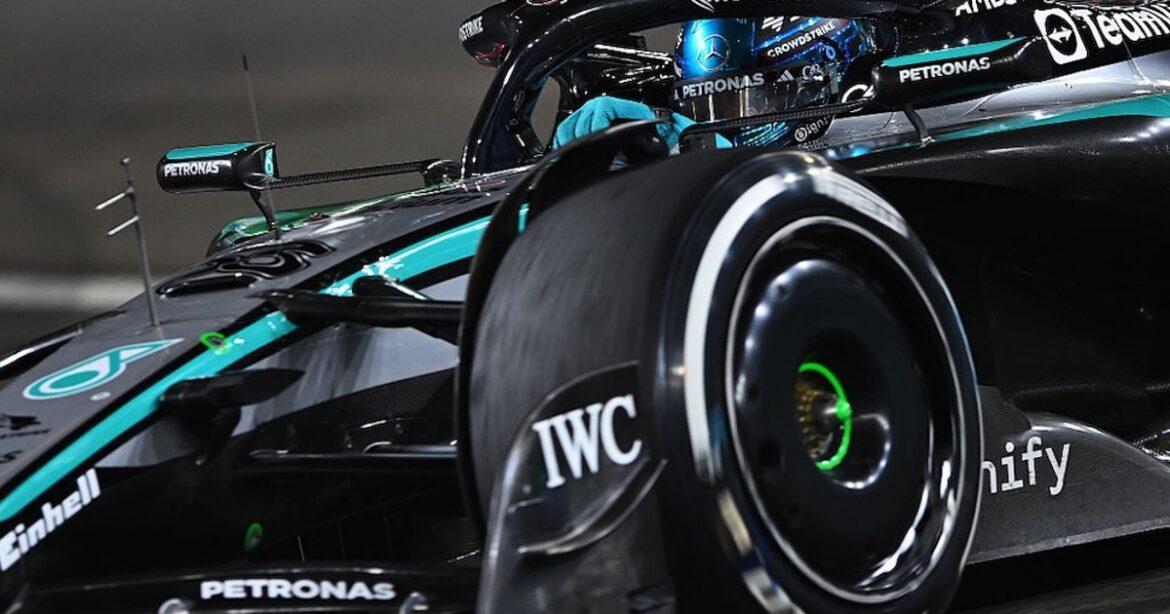Mercedes’ Strategic Advancements in Tire Management Following Singapore Grand Prix Triumph
Mercedes has expressed optimism about its recent enhancements in tire management, which it believes will enhance its competitiveness across a broader spectrum of racing tracks. This newfound confidence follows a significant victory at the Singapore Grand Prix, where George Russell showcased an impressive performance, securing pole position and ultimately winning the race, marking his second triumph of the season.
Optimizing Tire Performance in Challenging Conditions
Traditionally, Mercedes has faced difficulties when racing in higher temperature conditions under the existing technical regulations. However, their success on the demanding street circuit of Singapore—known for its potential to cause tire overheating—indicates a meaningful step forward. Trackside engineering director Andrew Shovlin has been vocal about the extensive work the team has undertaken to better manage the rear tires, especially on circuits that exert severe stress on tire performance.
Shovlin pointed out the challenges posed by the hot air conditions in Singapore, coupled with the significant traction demands of the circuit. He reflected on the struggles experienced during the previous year, stating, “Last year, during the 2024 season, we faced challenges during the race.” This victory is a testament to the ongoing efforts at the factory to develop the car, and Shovlin hopes this trend of improvement will continue in varying weather conditions and on tracks with high traction.
Understanding Circuit Characteristics
Despite the notable achievements in Singapore, Shovlin also emphasized the need for cautious optimism. He highlighted the similarities between the Singapore circuit and Canada—where Russell also claimed victory earlier this year. He reminded fans and team members to manage expectations as they approach the upcoming race at the Circuit of the Americas (COTA).
Shovlin explained, “If we analyze the tracks where we’ve excelled, particularly those where we’ve secured wins this year—Montreal and Singapore—we notice they are relatively low-speed circuits. Our car has shown strong performance in the slow-speed corners, where we enjoy excellent grip and driver confidence in heavy braking zones.”
However, he acknowledged a notable area for improvement: high-speed cornering. The team has been cognizant of this gap and continues to explore every possible adjustment to optimize the car’s setup. The upcoming COTA presents a unique challenge with its fast sector one, making it essential for Mercedes to demonstrate capability in that segment.
Building Momentum Towards Future Races
George Russell’s standout performance in Singapore has invigorated the entire Mercedes team, providing a significant morale boost as they head into the final six races of the season. Shovlin expressed his enthusiasm, stating that the team’s collective spirit has been rejuvenated by this success, fueling their determination to tackle a diverse range of circuits in the weeks ahead.
The team recognizes that each upcoming race will require strategic adaptations to the car, but they remain committed to maintaining their competitive edge. Shovlin noted, “We saw a brilliant performance from George, and the whole team has really been inspired by this. It’s given us the energy to push forward.” He remains optimistic about their ability to adapt and improve, even with the varying challenges that lie ahead.
The Road Ahead: Adapting to Diverse Circuit Demands
As Mercedes prepares for the remaining races, they are aware that the nature of each circuit will demand tailored strategies and adjustments. The diversity in circuit design—from high-speed stretches to technical corners—means that the team must remain dynamic in their approach.
Shovlin reiterated the importance of continuous improvement, saying, “We’re still working on enhancing our performance in high-speed sections, and that’s an area we’re actively addressing.” With a focused mindset, the team aims to extract every bit of performance possible from the car while ensuring it remains adaptable to different race conditions.
The upcoming races present an excellent opportunity for Mercedes to apply the insights gained from their recent success. They are determined to leverage their advancements in tire management and overall vehicle performance to challenge their competitors.
Conclusion: A Season of Transformation and Challenges
The journey for Mercedes in the 2024 season has been marked by challenges and progress. The victory in Singapore has served as a pivotal moment, highlighting the effectiveness of their tire management strategies and the potential of their car across various track conditions.
As the team looks ahead, they are committed to refining their performance and overcoming any hurdles that may arise. With a renewed sense of purpose and a clear focus on development, Mercedes is poised to face the upcoming races with optimism and determination.
